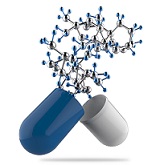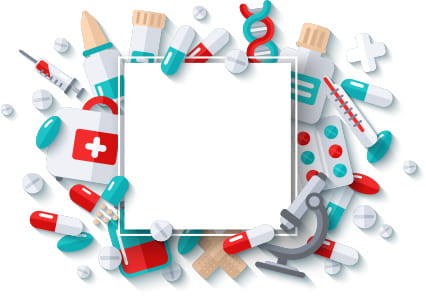A New Landscape for Import, Distribution, and Manufacturing of Pharmaceutical Products in the UAE
 The United Arab Emirates (UAE) presents a dynamic and rapidly growing market for life sciences companies. This promising landscape is shaped by evolving opportunities and challenges in the import, distribution, and pricing of medical products, including pharmaceuticals and medical devices. This article provides an overview of the applicable laws, recent changes affecting the regulatory landscape, and practical tips for doing business in the UAE. By understanding these aspects, companies can leverage the opportunities in the UAE's healthcare sector and avoid common pitfalls.
The United Arab Emirates (UAE) presents a dynamic and rapidly growing market for life sciences companies. This promising landscape is shaped by evolving opportunities and challenges in the import, distribution, and pricing of medical products, including pharmaceuticals and medical devices. This article provides an overview of the applicable laws, recent changes affecting the regulatory landscape, and practical tips for doing business in the UAE. By understanding these aspects, companies can leverage the opportunities in the UAE's healthcare sector and avoid common pitfalls.
Regulatory Framework
The primary law governing medical products in the UAE is Federal Law No. (8) of 2019 on Medical Products, Pharmacy Profession, and Pharmaceutical Establishments (the “Pharmaceutical Law”). This comprehensive legislation covers areas such as import, export, distribution, warehousing, manufacturing, pricing, advertising, and promotion. Furthermore, it oversees pre- and post-clinical trials, safety reporting, and product recalls. The Pharmaceutical Law governs all pharmacy professions, medical products, and pharmaceutical establishments within the UAE.
A significant amendment to the Pharmaceutical Law is the Law No. (11) of 2023 (the “New Pharmacy Law”). This law introduces new requirements for companies importing products into the UAE. Under the New Pharmacy Law, the Marketing Authorization Holder (MAH) must collaborate with two or more pharmaceutical establishments for importing and marketing medical products. This includes appointing at least two establishments for importing and one or more for distribution. However, the supporting regulations for the New Pharmacy Law have yet to be published by the Ministry of Health and Prevention (MOHAP), leaving some ambiguity regarding its practical application.
Establishment of the UAE Drug Authority
Another noteworthy development is the establishment of the UAE Drug Authority under Federal Decree-Law No. (28) of 2023. This authority aims to elevate public health standards and position the UAE as a global center for pharmacological and medical industries. The UAE Drug Authority, a federal institution with financial and administrative independence, is headquartered in Abu Dhabi. It is responsible for regulating medical products, developing policies, approving entities for research, establishing research centers, and testing medical products. The UAE Drug Authority succeeds MOHAP and the Ministry of Climate Change and Environment in rights and obligations related to medical products.
Importation and Distribution
To import, register, and distribute medical products in the UAE, a company must be established and registered with MOHAP, ensuring that the correct business activities are listed on its economic trade license. No medical products can circulate in the UAE market without prior marketing authorization, known as the marketing office license. The local distributor must hold the MAH, which is reflected in the MOHAP registration for each product to be distributed. Applying for a pharmaceutical distribution license under the category of licensing of a pharmaceutical facility typically takes around six months. Additionally, obtaining a medical warehouse license from MOHAP is essential for importing, exporting, storing, and distributing pharmaceuticals. This license ensures compliance with stringent technical and health and safety regulations.
Foreign Ownership and Free Zones
Previously, holding a pharmaceutical distribution license was the exclusive purview of companies wholly or majority-owned by UAE Nationals. However, recent changes aligning MOHAP with the UAE Companies Law now permit 100% foreign ownership of pharmaceutical distribution companies. This applies both on the mainland and in free zones. Life sciences companies are encouraged to explore opportunities and incentives offered by the UAE government and free zones, such as the Dubai Science Park, Dubai Healthcare City, and Masdar in Abu Dhabi. Additionally, foreign producers can now own manufacturing facilities, with significant drives by MOHAP to attract manufacturing into the UAE.
 Challenges and Considerations
Challenges and Considerations
The New Pharmacy Law’s requirement for multiple distributors may impact business plans, necessitating the presence of two companies/distributors for importing and marketing, and one for distribution. Existing products registered with MOHAP and distributed by a current distributor cannot be redistributed by a new entity unless the current distributor is terminated. This could pose challenges for companies seeking to change or expand their distribution network in the UAE.
Pricing Regulations
Pricing of medical products in the UAE is tightly regulated by MOHAP, which sets maximum prices based on evaluations of research proving effectiveness, safe use, and quality standards. Medical products cannot be sold at prices higher than those set by MOHAP, and discounts are not allowed except under special circumstances. The MOHAP-approved price label must be affixed to the outer cover of the medical product before sale and delivery.
The MOHAP Pricing Rules, based on the Medical Product Pricing Guidelines, outline criteria, procedures, and profit margins for pricing various categories of medical products. These rules also provide for periodic and exceptional re-pricing of registered medical products, with exceptions for necessary and life-saving drugs. It is crucial for pharmaceutical companies to comply with these pricing rules and avoid inflating prices, as violations can result in substantial fines and damage to the company’s reputation.
Future Outlook
Once the UAE Drug Authority is fully operational with its own product registration procedures, it is expected that the Pricing Rules will be reviewed and updated. The UAE may introduce additional flexibility in pricing products, potentially impacting the ‘data exclusivity’ period for patented products. This could increase competition while ensuring a secure supply of various products. For companies intending to distribute products to the wider GCC region, this will be a crucial issue to track, as the price set in the UAE often influences prices in other GCC countries, such as Saudi Arabia, leading to downward price pressures.
 Conclusion
Conclusion
The UAE presents a promising market for life sciences companies, but it requires careful compliance with applicable laws and regulations, particularly regarding the import, registration, distribution, and pricing of medical products. The recent changes introduced by the New Pharmacy Law and the establishment of the UAE Drug Authority may have significant implications for the pharmaceutical sector, although the details are still emerging. Companies are advised to seek professional guidance and assistance before entering the UAE market to avoid common mistakes and mitigate risks. By leveraging opportunities through a healthcare lens and adhering to regulatory requirements, life sciences companies can successfully navigate the UAE's evolving market landscape.
 English
English
 عربي
عربي Русский
Русский 官话
官话 português
português
 Türk
Türk 










